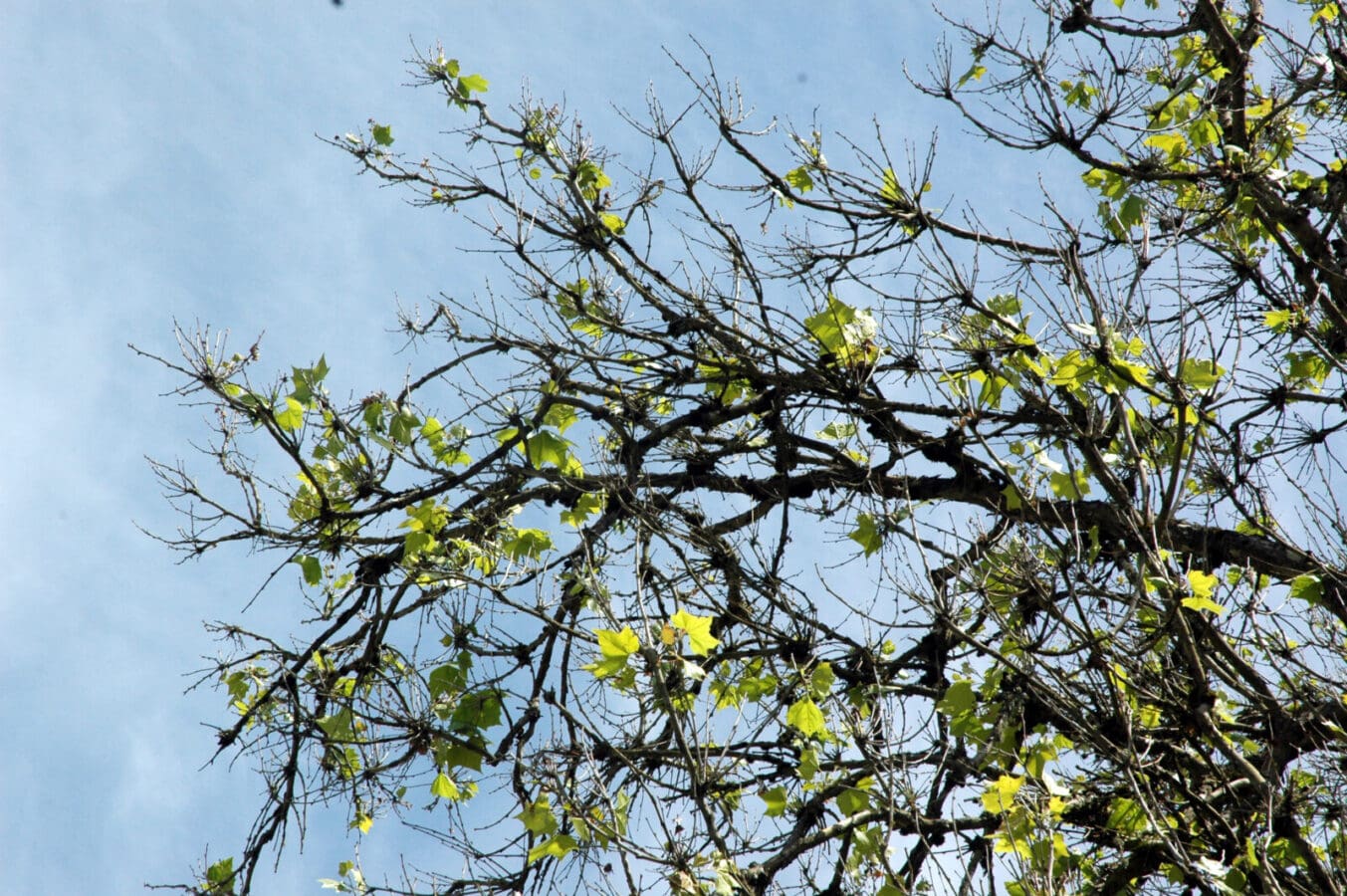A Guide to Protecting Your Sycamore Trees From Anthracnose
Sycamore trees are highly valued for their rapid growth and majestic beauty; this makes them a prized addition to any landscape. However, the threat of anthracnose, a common fungal disease, looms over these magnificent trees. If you have concerns about your sycamore tree’s health, our certified St. Louis arborists are available to inspect it and provide a free estimate. Click here to schedule a visit!
Symptoms of Anthracnose
Anthracnose exhibits several symptoms that indicate the presence of the disease:
- Twig dieback: Affected branches experience a decline in vigor, leading to their eventual death.
- Leaf blight: Leaves turn brown, wilt, curl, and prematurely fall off the tree.
- Bud blight: Buds become discolored and distorted, impeding their growth.
- Cankers: Sunken or raised areas on the trunk or branches excrete sap, signaling infection.

It is crucial to note that multiple years of infection can intensify these symptoms, leaving the tree vulnerable to pests and other diseases. Proper care, including adequate watering and the removal of infected limbs, along with a systemic fungicide trunk injection, is imperative for maintaining the health of your sycamore tree.
Life Cycle of the Anthracnose
The fungus responsible for sycamore anthracnose survives the winter on fallen leaves and cankers. In the spring, rain facilitates the production and spread of spores. The severity of anthracnose outbreaks depends on spring weather conditions. While recent cool and dry weather has subdued anthracnose, a sudden shift to high humidity in early May triggered a widespread outbreak in St. Louis. As a result, many trees in the local area are displaying signs of distress. However, with time, these trees are expected to rebound and produce a new set of leaves. Nevertheless, repeated infections over time can pose long-term challenges for sycamore trees.
When to Treat Your Sycamore Trees
To achieve optimal results, we recommend applying a single fungicide injection between August and October. This time frame provides protection against the fungus during its early spring attack.
Additional Recommendations
In addition to fungicide treatment, there are other measures you can take to mitigate the impact of anthracnose on your valuable sycamore trees:
- Remove dead or infected branches: This helps prevent the spread of the disease within the tree.
- Dispose of fallen leaves and dead branches: Proper disposal reduces the chances of reinfection.
- Winter watering: Dry winters exacerbate the effects of anthracnose in the subsequent spring. Water your tree once a month during snowless winters, preferably when temperatures are above freezing.
- Improve air circulation: In some cases, enhancing airflow throughout the tree can be achieved through crown reduction. For more information on this technique, please refer to our blog post on tree topping versus crown reduction.
Sycamore trees hold immense value due to their stunning appearance and rapid growth. However, anthracnose poses a persistent threat to their health and aesthetics. By understanding the symptoms and life cycle of this fungal disease and by implementing appropriate preventive measures, such as fungicide treatment, branch removal, and proper tree care, you can protect your valuable sycamore trees.
If you have a high-value sycamore tree in St. Louis, we invite you to click the link to schedule a visit from our certified arborists. They will inspect your tree and provide a free estimate. Don’t hesitate to reach out to us for expert assistance and guidance. Contact us today!

